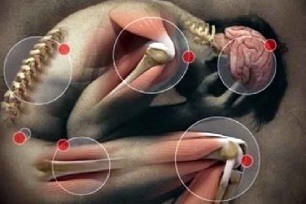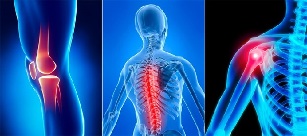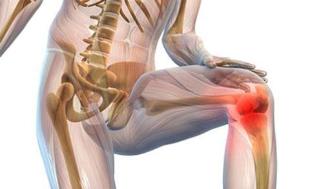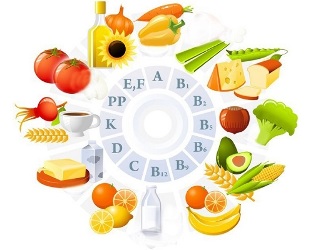Osteoarthritis is a chronic joint disease accompanied by pathological changes in the hyaline cartilage followed by adjacent tissues, the joint capsule, and the synovium.
The lesion is dystrophic and degenerative, leading to changes in the structure of the joint tissues, loss of their functional ability. According to the same statistics, 12% of the total population of the planet is prone to arthrosis. It occurs in 62% to 65% of all episodes of the disease in people over the age of 60.
An additional 30-35% of joint damage associated with this pathology occurs in patients 40-60 years of age. And about 3% of them are young people between the ages of 20 and 40.
What's this?
Simply put, arthrosis is a chronic disease in which gradual degenerative-dystrophic changes develop in the joint due to metabolic disorders. This is the most common joint pathology diagnosed in 6-7% of the population. The incidence increases dramatically with age.
In arthritis, the pathological process is the small joints of the hand (ten times more often in women than in men), the intervertebral joints of the big toe, chest, and cervical spine, and the knee and hip joints. Arthritis of the knee and hip joints is a leader in terms of the severity of clinical symptoms and the negative impact on quality of life.
Arthrosis is characterized by a complex lesion of the joint and accessory device:
- chondritis - inflammatory changes in the cartilage of the joint;
- osteitis - involvement of the underlying bone structures in the pathological process;
- synovitis - inflammation of the inner membrane of the capsule;
- bursitis - damage to the periarticular sacs;
- Reactive inflammation of soft tissues (muscles, subcutaneous tissue, ligaments) found in the projection of the affected joint (periarticular inflammation).
The disease is diagnosed in 2%, 30% (45-64 years) and 65-85% (65 years) of people under the age of 45. Arthrosis of the large and medium joints of the limbs is of the greatest clinical significance as it has a negative effect on patients' living standards and ability to work.
Types of arthrosis
A distinction should be made between primary arthrosis, secondary and idiopathy, depending on the cause of the intra-joint pathological process.
The primary develops as a stand-alone disease, as a secondary result as a result of injury or infection, and the cause of the idiopathic form is unknown. In addition to the classification of the disease, depending on the cause of the pathological process, arthrosis is also distinguished from the site of destructive changes:- Gonarthrosis is the most common type of pathology characterized by damage to the knee joints. Gonarthrosis is most commonly seen in overweight people who have chronic metabolic diseases in the body and weak immunity. Arthritis of the knee progresses over a long period of time and gradually leads to a complete loss of motor function.
- Arthritis of the shoulder joint - the main cause of degenerative processes is congenital abnormalities in the formation of the shoulder joint or excessive strain on the area, such as when there is heavy luggage on the shoulders.
- Ankle arthritis - The main causes of degenerative processes in the ankle joint are trauma, blows, spikes and fractures. In some cases, the development of the pathological process can trigger an autoimmune disease - rheumatoid arthritis. Ankle arthritis affects dancers, women in high heels, athletes

- Uncoarthrosis or arthritis of the cervical spine - causes of neck injuries, progressive osteochondrosis, obesity, sedentary lifestyle. Computer workers in offices are at risk. In addition to severe neck pain, patients also experience significant dizziness, loss of consciousness, memory impairment, and fatigue. These symptoms are caused by compression of the artery in the spine, through which nutrients and oxygen get to the brain.
- Coxarthrosis or arthritis of the hip joint - the main cause of the appearance is age-related changes in the tissues of the joint. People over the age of 45 are at risk.
- Fingers osteoarthritis - develops for the same reason as spondyloarthrosis.
- Polyarthrosis - characterized by the loss of multiple joints, along with progressive degenerative processes, while the pathological process is part of the ligaments, muscles and tissues surrounding the joint.
- Spondyloarthrosis - tissues of the spinal column, namely the lumbar region, are subject to destructive destruction. Women are at risk in early menopause because spondyloarthrosis develops as female sex hormone deficiency progresses.
Causes of arthrosis
There are two causes of osteoarthritis - stress and a lack of proper nutrients that provide vitamins and minerals to repair tissues. All human joints carry a burden. For athletes and dancers, physical work puts more strain on the legs, which means the joints in the bones wear out faster and require high-quality nutrition. In the case of a quiet lifestyle, the support device behaves more slowly, but it also requires periodic renewal of the tissue.
Therefore, the main condition for joint destruction and deformity is malnutrition, an indigestion of beneficial components that often occurs with metabolic disorders.
List the factors that contribute to joint wear and metabolism:
- Muscle weakness and abnormal load on the joints. Weakening of one or more muscles increases the load on the joint and distributes it unevenly at the bone node. With flat legs and scoliosis, the muscles are not properly loaded, therefore with these "harmless" diseases, the cartilage tissues wear out with age, and arthrosis appears.
The likelihood of osteoarthritis increases with strong physical effort.
If the daily load exceeds the capacity of the bone tissue, microtrauma is formed in them. Densifications appear at the site of injury, which increase over time and deform the joint;
- Metabolic disorders (gastrointestinal disorders - bile stagnation, dysbiosis, gastritis, cholecystitis, pancreatitis, metabolic disease - diabetes);
- Psychosomatic causes - The psychosomatics of arthrosis confirm that a negative emotional state is also the cause of the disease. Stress creates muscle cramps, constant stress disrupts the nutrition of all tissues (internal organs, bones, joints);
- Heredity (the type of metabolism and its possible abnormalities are inherited, prone to muscle weakness or poor bone structure, poor digestion - this is the basis for the development of osteoarthritis in old age).
Osteoarthritis is a disease of worn out joints that have lost significant amounts of minerals and are able to withstand stress and destruction. Therefore, the susceptibility to the disease increases with age. After 70 years, osteoarthritis is diagnosed in every second retiree. As the maximum load falls on the legs (one moves - walks, stands, runs, jumps), the first signs of arthritis are created here.
Mechanism of disease progression
If any cause of the disease associated with joint arthrosis appears, pathological processes develop in it. The mechanism of their progression is not fully elucidated, but the main stages of formal medicine are known.
Initially, there is depletion of cartilage tissue structure and abnormal changes in synovial fluid. This is due to metabolic abnormalities when the tissue of the joints does not receive enough of the required ingredients or is deprived of some of them.
In addition, we lose the elasticity of collagen fibers and the elasticity of cartilage because in the absence of nutrients, the body does not have time to produce hyaluronic acid, which provides softness and flexibility in the structural composition of collagen fiber. The cartilage gradually dries out, becomes brittle and cracks. The fluid in the synovial capsule is gradually depleted and then completely disappears.
Roughness and firm bones increase in the cartilage tissue. At the same time, other tissues of the joint develop deformation, pathological degeneration, dystrophy and loss of physiological activity. For the patient, these changes are pain, lameness, joint stiffness
Joint symptoms
The acute clinical picture is not characteristic of arthrosis, the changes in the joints are progressive, slowly increasing, as indicated by the gradual increase in symptoms:
- pain;
- intermittent cracking of the affected joint;
- joint deformity that appears and worsens as the disease progresses;
- stiffness;
- Restriction of mobility (reduction of active and passive movements in the affected joint)
The pain of osteoarthritis is dull, transient, appearing when you move in the midst of intense stress at the end of the day (it may be so intense that it does not allow the patient to fall asleep). The persistent, non-mechanical nature of osteoarthritis pain is uncharacteristic and indicates the presence of active inflammation (subchondral bone, synovium, ligamentous device, or periarticular muscles).
Most patients notice so-called initial pain, which occurs after waking up in the morning or after a long period of inactivity and disappears during exercise. Many patients define this condition as “need to build a joint” or “turn off. ”
Arthrosis is characterized by morning stiffness that has a clear localization and is short-term (up to 30 minutes), which patients sometimes see as a "gely" feeling in the joints. Feeling of wedges, rigidity possible.

The development of reactive synovitis is associated with the main symptoms of arthrosis:
- pain and local increase in temperature as determined by palpation of the affected joint;
- persistent pain;
- joint enlargement, soft tissue swelling;
- a gradual decrease in the range of motion.
The joint sections and degrees
In the course of the disease, medicine distinguishes three stages, which differ in the signs of the disease, the intensity of the lesion, and the localization. However, in all three stages, the differences apply to tissue types undergoing pathological changes
- The first stage in the development of arthritis in the joints is the initial phase of the disease. Mild damage to cartilage tissue and loss of physiological functions of collagen fibers are characteristic. However, in the first stage, minor morphological abnormalities of the bone tissue and structural changes in the synovial fluid are observed. The cartilage of the joint is covered with cracks, the patient has mild pain at the site of the pathology.
- Second degree - development of osteoarthritis with increased dynamics. This stage is characterized by stable pain and lameness. There are noticeable morphological and dystrophic changes in the cartilage, and an increase in bone tissue can be recognized during diagnosis. Osteophytes are formed - an increase in bones that can be seen on visual inspection of the site of injury. However, the process of degenerative changes in the synovial capsule continues, leading to its structural depletion. The disease can often get worse at this stage and be regular. The pains gradually become permanent.
- Third degree - active progression. At this stage, due to degeneration of the synovial fluid, it is almost completely absent and the bone tissue is rubbed against each other. The movement of the joint is almost completely absent, the pain becomes more palpable. Cartilage is also absent due to degenerative and atrophic changes. Third-degree treatment of arthritis of the joints is inadequate.
In addition to these three degrees of pathology, there is one final stage - the irreversible destruction of all tissue in the joint. At this stage, it is impossible not only to perform effective treatment but also to relieve pain.
The inflammatory process usually begins in the second stage of the injury, rarely in the absence of medical intervention - the first stage. After that, it becomes more and more difficult to stop, and this can lead to secondary pathologies, the formation of the pathogenic microflora at the site of the disease.
In order to avoid serious consequences, treatment should be started from the first stage, but intensive therapies should be used. In the final stage, which involves the complete destruction of cartilage tissue, only one method can be allowed to relieve the patient of joint pain and mobility - arthroplasty with complete or partial replacement of the components of the joint.
Consequences
The consequences of premature treatment and advanced arthrosis of the joints include complications such as:
- disability;
- deformation after recovery; Occurrence of
- spinal columns;
- joint stiffness or stiffness;
- deterioration in quality and standard of living.
In addition to these complications, the chronic course is characterized by intense and frequent pain, complete destruction of the structural elements of the joint, discomfort, inability to do physical work and sports.
Diagnostics
The diagnosis of osteoarthritis is based on the evaluation of anamnestic data, characteristic manifestations of the disease, and the results of instrumental research methods. Indicative changes in general and biochemical blood tests are not characteristic of arthrosis, they only occur with the development of an active inflammatory process.
Radiography is the main tool for diagnosing osteoarthritis, and computational or magnetic resonance imaging is recommended in diagnostically unclear cases.
Arthritis of the knee and hip is a leader in terms of the severity of clinical symptoms and the negative impact on quality of life.
Additional diagnostic methods:
- atraumatic arthroscopy;
- ultrasound (assessment of articular cartilage thickness, synovium, condition of joint capsules, presence of fluid);
- scintigraphy (the condition of the bone tissue in the head of the bones that make up the joint). xx / li>
How to treat osteoarthritis
It is better to treat arthritis of the joints at an early stage, the treatment itself should be pathogenetic and complex. Its essence lies in the removal of the causes that contribute to the development of the disease, the need to eliminate inflammatory changes and restore previously lost functions.
The treatment of arthrosis is based on several principles:
- Oxygenation of the joint, or so-called intraarticular oxygen therapy.
- Medication
- Decompression of internal blocks and metaepiphysis.
- Sustainable Diet.
- Damaged joints should be relieved of excessive stress. If possible, treatment should be kept to a minimum.
- Follow the established orthopedic order.
- Physiotherapy exercises.
- Complete a physiotherapy course that includes magneto and electrotherapy, shock wave, and laser therapy.
- Sanatorium treatment. To do this, once a year, on the recommendation of a doctor, a treatment should be given in special resorts.
Preparations for the treatment of arthrosis
Medication is given during the exacerbation phase of osteoarthritis, which is selected by a specialist. Self-medication is unacceptable due to possible side effects (such as the negative effect of NSAIDs on the gastric mucosa).
Therapy includes the following medications:
- Anti-inflammatory. By starting treatment for arthrosis comprehensively, you can slow down the course of the disease and significantly improve your quality of life. Some points of treatment may need to be addressed in more detail. In particular, medication involves the initial stage - this is the removal of pain as well as the elimination of inflammatory processes in the joints. To do this, all doctors use non-steroidal anti-inflammatory drugs. Oral administration is not recommended by experienced physicians because these drugs are highly irritating to the gastric wall. Therefore, intravenous or intramuscular administration is used, depending on the drug chosen. Occasionally, as an adjuvant, NSAIDs are used in the form of ointments, but their absorption is extremely low, so no significant effect is achieved.
- Hormonal corticosteroids. If the osteoarthritis is in the stage of exacerbation, it is advisable to take hormonal corticosteroids. They are injected into the joint. Externally, you can use a special plaster, ointment or tincture based on hot pepper. Chondroprotectors to restore cartilage and improve the qualitative composition of synovial fluid will not be superfluous. The course lasts quite a long time until the improvement happens. However, if the expected effect does not occur within six months of administration, the medication should be discontinued. In addition to intraarticular and chondroprotectors, the use of drugs based on hyaluronic acid is recommended. They contribute to the formation of the cell membrane responsible for the formation of articular cartilage.
Physiotherapy
To relieve pain, reduce inflammation, improve microcirculation, and eliminate muscle cramps, a patient with arthrosis is referred to physiotherapy:
- In aggravation stage. Invest in laser treatment, magnetic therapy and ultraviolet radiation,
- in remission. Displayed electrophoresis and phonophoresis
In addition, thermal processes, sulfide, radon and sea baths are used. Electrical stimulation is performed to strengthen the muscles. Mild massage can also be used during remission.
Surgery
If the listed exposure methods are not effective, surgical treatment of arthrosis is required in the presence of complications:
- decompression of metaepiphysis and prolonged intraosseous blockade (decrease in intraosseous pressure in the affected area);
- Corrective osteotomy;
- Endoprosthesis of joints.
In the early stages of the disease, mechanical, laser, or cold plasma disinfection (smoothing the surface of damaged cartilage, removal of lifeless areas) is used. This method is effective in relieving pain, but temporarily for six - 2-3 years.
Folk remedies
Most people these days do not want to take pills or injections. Therefore, the question is asked - how can arthritis be treated with folk remedies? Such funds are largely used to increase body tone, improve blood circulation, relieve pain, and enhance immunity.
Traditional medicine recipes are used to treat this disease:
- The egg solution is made from fresh egg yolk mixed with turpentine and apple cider vinegar in a ratio of 1: 1: 1. The fluid should be mixed thoroughly and rubbed through the affected joint overnight. Then you need to wrap everything in a woolen cloth. It is recommended to rub 2-3 times a week for a week.
- Buy elecampane root from the pharmacy. They are usually packaged in packs of 50 grams. To make the tincture, you need half a pack of plant roots and 150 ml of high-quality vodka. The ingredients are mixed, placed in a dark bottle and infused for 12 days. Rubbing before going to bed and preferably in the morning.
- Using cooked oatmeal also gives good results. Take 3-4 tablespoons of oatmeal, pour boiling water and cook over low heat for five to seven minutes. The amount of water used should be a thick porridge that should be cooled and compressed overnight. Use only freshly cooked flakes. Yesterday's porridge is not good for a compression.
- The inflorescences of birch, nettle and marigold are taken in equal parts. As a result, you will need to obtain two tablespoons. The resulting crushed collection is placed in a thermos, made up to one liter with boiling water and left to stand overnight. The next morning, you should take half a glass of broth four to five times a day. The prescription is two to three months.

Tinctures of bay leaf, horseradish, garlic and rye seeds are also considered effective. Treatment of osteoarthritis with folk medications will be most effective when combined with medication.
Joint nutrition
The nutritional principles of arthrosis are reduced to the following points:
- Avoid heavy foods at night to avoid joint attacks.
- Eats fractionated.
- Continuously check your weight to avoid weight gain,
 and thus additional strain on sore joints.
and thus additional strain on sore joints. - If the disease does not get worse, walk after a meal.
- The menu should be balanced and compiled by your doctor.
They don't complain about fish dishes at all - of course many of them can be eaten in reasonable amounts.
- Remember to eat food regularly. Vitamin B vitamins are particularly relevant in patients with osteoarthritis
- Jelly meat plays an important role in the treatment of arthrosis. Such foods are really stores of trace elements for sore joints. The most important component of aspen is naturally occurring collagen
- Vitamin B promotes the formation of hemoglobin. "Obtainable" by eating bananas, nuts, cabbage and potatoes. It is worth tolerating with herbs and legumes. These will be the source of folic acid. Liver, mushrooms, dairy products and eggs will be useful. They are rich in riboflavin.
Using a treatment regimen prescribed by your doctor, you can ensure that the disease recedes and the damaged tissues begin to regenerate.
Prevention
Prevention of osteoarthritis begins with proper nutrition. You should try to reduce your salt intake as well as foods that can disrupt your metabolism. These include legumes, fatty meats and alcohol. The diet includes cabbage, greens and fish.
To prevent arthrosis, physical education classes should be taken and warm-ups should be performed. If possible, it is better to walk a few kilometers. It is important to monitor your weight and prevent weight gain as this will cause additional stress in the sore joints. It is not recommended to take tablets for weight loss as they may interfere with the body's metabolism.
Forecast
Life prospects are favorable. The benefit of social and labor force forecasting depends on the timeliness of diagnosis and initiation of treatment; decreases if a decision on the surgical treatment of the disease is delayed if necessary.





































